To learn how to slide head first in baseball, you need to complete these 4 steps.
The 1st step is reading and interpreting the fielder’s position to determine if headfirst sliding is appropriate.
In the 2nd step, you need to get into a sprinter’s position by leaning forward and pushing off on your toes with extended arms.
During the 3rd step, lean forward and extend your arms to minimize friction and rely on force rather than skin-to-skin contact.
And finally, in the final phase, tuck the head and slide on the stomach to maintain balance and control while maximizing speed.
I’ve played and coached the game for over 15 years, observing various sliding techniques – including the fact that headfirst slides carry a higher risk of injuries.
I made this post to instruct you on learning this sliding technique properly while minimizing potential harm. Ready to steal bases like a pro? Let’s dive right into it!
Key Takeaways
- Firstly understand this, head slide isn’t only intended for baserunners or batters, even the fielders need to conquer this skill.
- Reading the defender’s position before sliding will help accurately anticipate where throws may be sent, thereby increasing the chances of reaching base safely.
- Proper technique is paramount to executing a successful slide; beginning with a sprinter’s starting stance and leaning forward helps maintain balance while extending arms assists in reducing air friction.
- Use a baseball sliding mat along with other protective gear to make your practice risk-free.
How to Slide Head First in Baseball: Techniques and Body Position
To perform a successful head-first slide, players must get into a sprinter’s position, lean forward and extend their arms while tucking their heads to glide on top of the grass. But before that, you should go through some fundamentals as well.
Remember to keep your head up and avoid diving directly onto the top of the helmet to minimize injury risk.
Step 1: Reading the Fielder’s Position
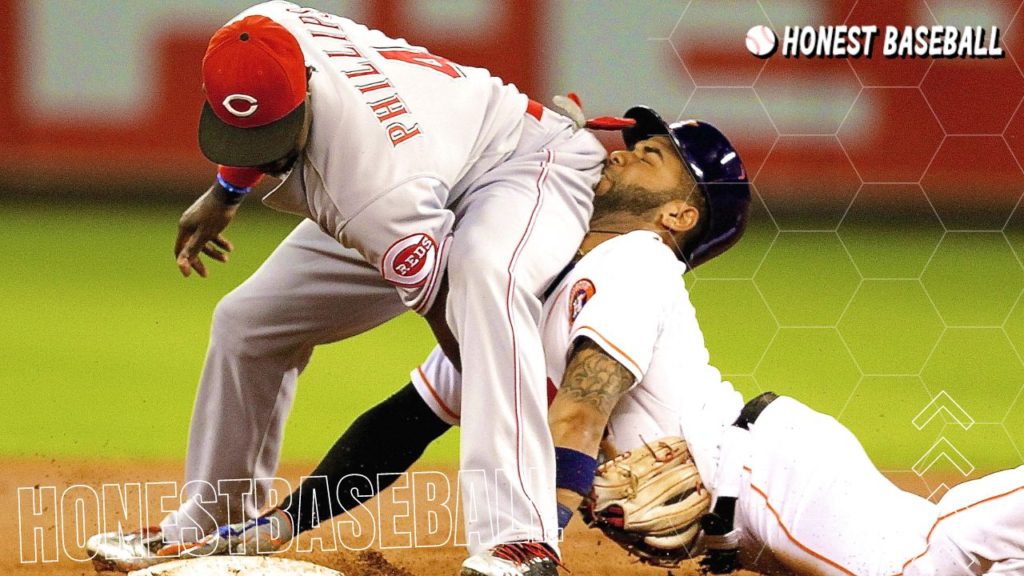
Sliding head first in baseball requires the ability to read and interpret the fielder’s position.
When sliding, it’s important to observe where the opposing players are positioned so that you can determine whether or not head-first sliding is an appropriate move.
To do so, you should take a quick mental assessment of which direction they’re standing and how far away they are from your current base path.
Learning how to do this gets easier with repetition and practice. Additionally, reading the fielder’s position also comes in handy while stealing bases.
Advantages:
- You can accurately anticipate where throws will be sent before deciding to slide head first.
- Helps build confidence in players
Step 2: Getting into the Sprinter’s Position

To slide head first in baseball, you must begin by getting into a sprinter’s position. This entails leaning forward and pushing off on your toes with your arms extended behind you.
Bonus: When going into a slide feet first, the most important thing is to maintain balance and trace an arrow shape with your body as much as possible.
The same concept applies to a headfirst slide. Keep the body straight ahead towards the base in its tried-and-true motion, having elbows back will propel you more effectively towards the destination quicker.
Advantages:
- Moving from standing upright to nearly full extension of your legs helps increase speed when following this pattern.
Step 3: Leaning Forward and Extending Arms
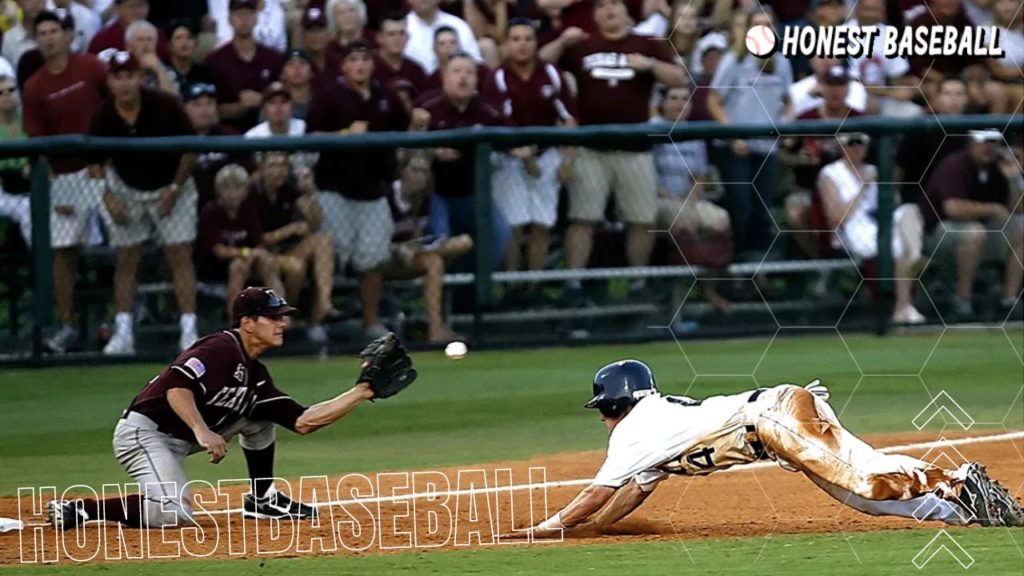
When sliding headfirst, the arms are essential in getting to the desired position of a ‘sprinter’s starting stance.’
To avoid scraping up your knees and creating friction while holding onto the ground, you must lean forward and extend your arms as much as possible.
By doing so, you can better utilize the force instead of having to rely solely on friction created from skin touching dirt or turf.
Advantages:
- Limits the risk of skin-to-skin contact with infielders by allowing for better positional awareness
Step 4: Tucking Head and Sliding on Stomach
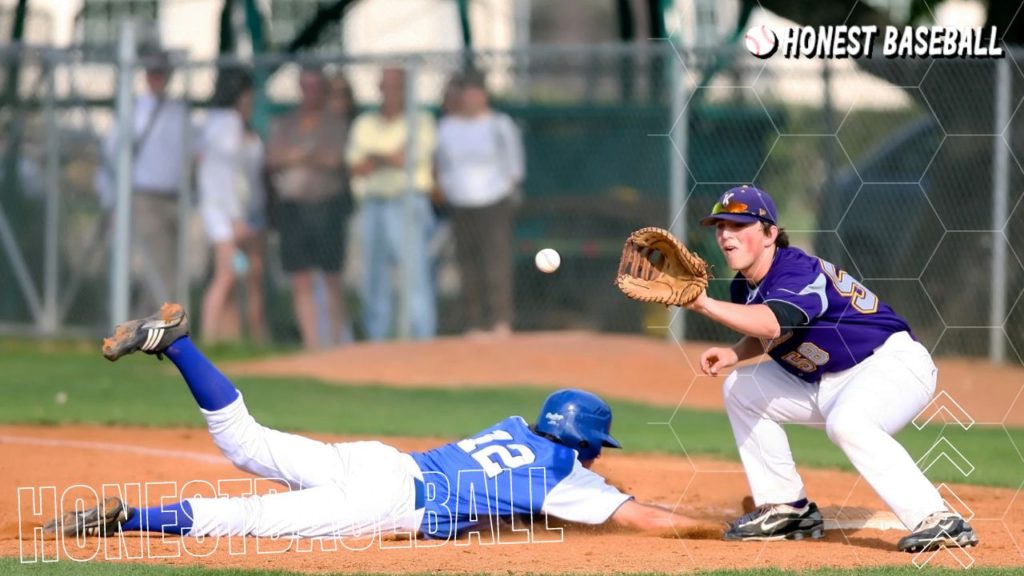
Sliding head first on the stomach helps maximize your speed and forward momentum when running to the base.
To properly execute this move, you must keep the arms extended out front with elbows slightly bent and your heads tucked down between them (similar to the form of a sprinter at set off).
This helps maintain balance and control while avoiding scraped knees as you slide. Your head must remain raised so that you can gauge where the fielder’s position is relative to yours.
Advantages:
- Gives strategic options such as diving or cutting around other players.
- Puts less strain on contact points like joints and muscles which helps protect against injury.
Baseball Drills to Improve Your Sliding Technique
To improve your sliding technique in baseball, it’s important to practice specific drills that focus on the mechanics of a successful slide. One effective drill is the “Sliding Practice Drill.”
- You need to find an open area on the field or use cones to create a designated sliding lane. Start at one end of the lane and sprint towards it.
- As you approach, initiate your slide by leading with one leg while extending your arms forward for balance.
- Aim to land smoothly and safely, simulating game-like scenarios where you need to avoid tags or reach bases quickly.
By regularly practicing these sliding drills, you’ll become more comfortable and confident in executing different types of slides during actual games. Remember that mastering proper form is essential for reducing injury risk and maximizing speed when sliding head-first in baseball.
Advantages of a Head First Slide
It has both advantages and disadvantages like other sliding techniques. But before diving into the odds, check out how you can make it a powerful weapon for your baseball career.
Firstly, sliding headfirst allows you to reach the base faster. It maximizes your speed and momentum by putting your body closer to the ground and reducing friction. This can make all the difference in close plays or when trying to beat out an infield hit.
Secondly, a headfirst slide enables you to avoid tags more effectively. As you dive towards the base with your hands leading, you achieve better control over where your body makes contact with the ground.
This strategic positioning makes it harder for fielders to tag you out quickly, giving you an advantage on base paths.
Lastly, sliding headfirst allows for greater flexibility and agility in adjusting your path while sliding. You’ll have more freedom to maneuver around potential obstructions such as fielders or other baserunners attempting double plays.
Risks Associated with Head-First Sliding in Baseball
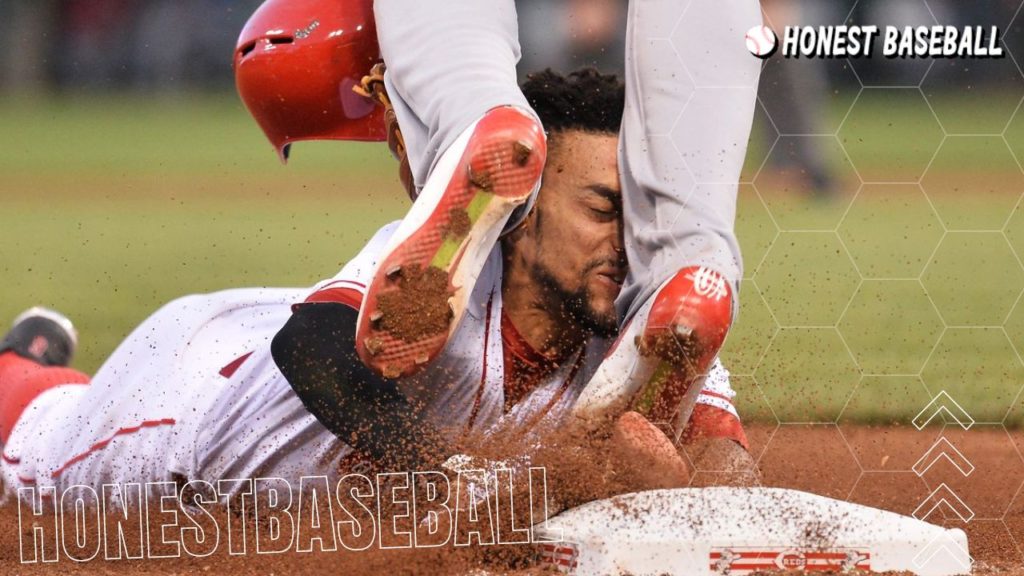
For beginners, it can result in injuries, especially to the wrists and hands. Though it provides small advantages in some scenarios, it generally puts players at greater risk of injury than sliding feet first.
In addition to wrist and hand sprains and fractures, headfirst slides also put athletes at greater risk for shoulder dislocations because of the awkward position they’re forced into when attempting the slide.
“Recovering from a shoulder dislocation can take up to 12-16 weeks and may require surgery.”
Concussions are another potential risk due to worsening any colliding with a player or base; this is why wearing protective gear like helmets over softer hats is always recommended.
Keep in mind that most baseball coaches generally discourage sliding headfirst due to the potential for injury.
“For youth or high school players, where safety is paramount, it’s advisable to stick with feet-first slides whenever possible. Sliding techniques should always prioritize player safety while adhering to the rules of the game.”
How to Prevent Injury When Sliding Head First
You need to consider safety when sliding head-first to reduce the chance of collisions with other players and injuries during play.
Adapt Body Mechanics
Body mechanics are essential for preventing possible injuries from sliding head-first. Adapting safe play habits is the best practice to save yourself from these incidents.
Follow the “Sprinter Stance Strategies” that I mentioned above.
Besides, proper chin tuck can protect you against incorrect base contact or landing. It also helps maintain balance during sliding momentum and speed generated.
Use Protective Gear and Equipment
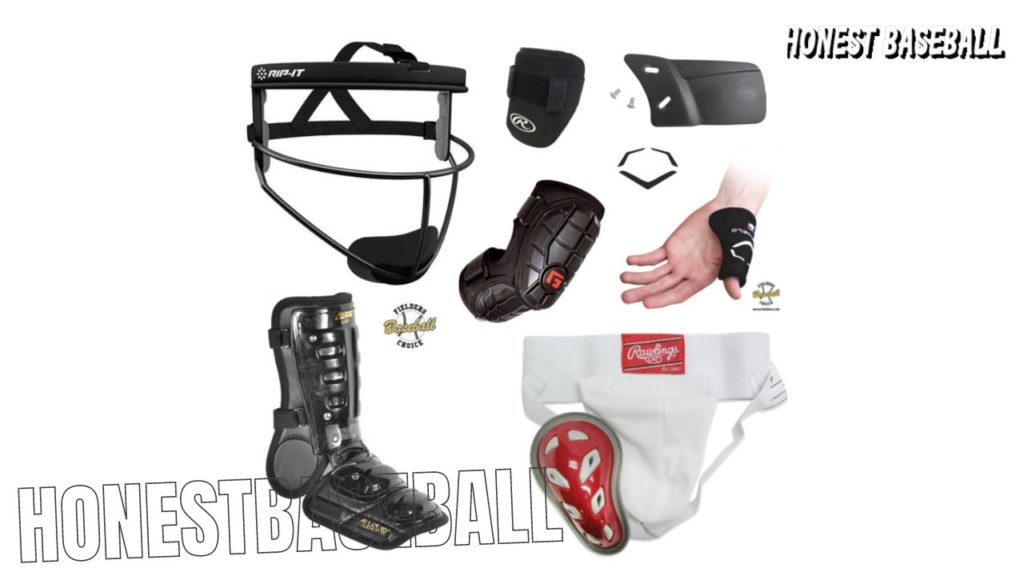
As a baseball learner, you can’t avoid the support of protective gear and equipment. This consists of helmets, and pads for the neck, shoulder, elbow, chest, knee, and shin.
Wearing properly fitting and appropriate safety equipment can help minimize the risk of head injuries.
“Even I saved myself once during a Minor League event when I hit an opponent team’s player while tagging him out!”
However, the most important of all is using a baseball sliding mat.
When to Slide Head First?
There’s no doubt the head-first sliding can be advantageous in some base stealing, a close play at the plate, and other scenarios where an aggressive dive can help get one to the base faster. Let’s learn more about them:
Example Situation 1: Base Stealing
When base stealing is your goal, sliding head first can be very advantageous. It allows you to get a quicker start off the bag and quickly move into a sprinter’s position ready to slide.
This gives you the upper hand in games of inches when safe or out calls are close!
Also, if you face an infielder with strong throwing accuracy and speed to reach the bag ahead of you, this helps reduce their chances of making an accurate throw (as their vision will be slightly obstructed.)
Example Situation 2: Close Plays at the Plate
When a play at the plate is close, sliding headfirst can often be an effective way to beat the tag.
The advantage of a head-first slide is that you maintain forward momentum and can extend yourself further toward home plate.
It’s important to practice and master proper technique for a successful head-first slide.
Other Baseball Slides At a Glance

Without the head-first technique, there are also feet-first and hook slides that you need to master. Learn the brief below:
Feet First or Pop-up Slide
A well-executed feet-first slide takes you swiftly to the base from a distance while reducing the risk of injury.
You extend one leg forward and contact the base with it, keeping your other leg bent for balance and agility.
With a pop-up slide, on landing with one foot touching the base first, you position your ankle under your straight leg’s hamstring.
This action helps spring you back up from slides into standing positions!
Check out this YouTube video to learn pop-up or feet-first sliding.
Hook Slide
The hook slide is an intricate maneuver that requires precision and skill. You’ll often see Major League Baseball players employ this technique to dodge a tag while reaching for the base.
This sliding method involves sprinting toward the base, then turning sideways at the last second and extending one leg toward the bag.
The objective is to touch the outside half of the base with your foot and clutch it tightly with one hand – all while avoiding getting tagged out by a fielder who’s ready to receive a ball hurtling towards them.
It’ll become easier for you to learn hook slides following this video.
Differences Between Head-first Sliding and Feet-first Sliding in Baseball
Both are frequently used by baseball players and are suitable for different situations and roles. Go through the quick table to learn the differences.
| Considerations | Head-First Sliding | Feet-First Sliding |
| Technique | Player leads with their head, upper body, and arms | Player leads with their legs and lower body |
| Safety | Considered more dangerous as it can lead to head and neck injuries | Considered a safer option as players can protect their head and neck |
| Speed | Allows players to maintain momentum and speed | Slower compared to head-first sliding |
| Base Reach | Can often reach the base more quickly due to the body’s position | May require more effort to reach the base |
| Control | Offers less control and may result in oversliding the base | Provides better control, minimizing the risk of oversliding |
| Effectiveness | More effective in reaching bases with a shorter distance from the ground | Often preferred for bases further away |
| Technique Difficulty | Requires practice and proper technique to avoid injuries | Easier to learn and execute compared to head-first sliding |
| Strategic Advantage | Allows players to elude tags and make swift direction changes | Less effective in avoiding tags and quick direction changes |
Best Sliding Mats to Learn Head Slides
When it comes to learning how to slide head first in baseball, a sliding mat can be a lifesaver. From my personal experience, I suggest going with the BalanceFrom and the Pro Lift C-5006.
Balance is smaller but appreciated by more than 38,000 customers. On the flip side, I liked the Pro Lift for its bigger dimension and more foldable ability.
BalanceFrom Foldable Baseball Sliding Mat
This is the first sliding mate that I bought for training my son. I highly recommend the BalanceFrom mat. This mat is specifically designed to enhance your sliding technique and overall performance on the field.
With its high-density foam construction, it provides a cushioned and shock-absorbing surface. Therefore, it minimizes the risk of injury during headfirst slides and other training exercises. Besides, the non-slip surface ensures safety and stability.
Whether you’re practicing indoors or outdoors, this durable mat will withstand rugged conditions and repeated use.
I also loved the foldable design that makes it easy to transport and store.
Pro Lift C-5006 Foldable Anti Fatigue EVA Foam Mat for Baseball
It’s actually his second gig. Maybe last November I bought this Pro Lift foam mat because he asked for a larger sliding mat.
Anyway, another reason I picked this is its specifically designed cushioned surface for practicing sliding without the fear of getting injured.
Made from durable EVA foam, this mat helps absorb impact and reduce the risk of wrist, hand, and finger injuries during slides.
Besides, it closely simulates the feel of sliding on dirt or grass, allowing him to perfect the technique in a realistic setting.
Whether you’re training indoors or outdoors, this lightweight and portable mat is easy to transport and store when not in use.
Frequently Asked Questions
Is sliding head first in baseball faster than sliding feet first?
Sliding head first in baseball is often believed to be faster than sliding feet first because it allows the runner to maintain momentum and reach the base more quickly.
Are there any risks associated with sliding head-first in baseball?
Yes, there are risks associated with sliding head first. Players risk injury to their hands, wrists, fingers, and face if they make contact with the ground or a fielder’s equipment during the slide.
How can I practice sliding head-first in baseball safely?
To practice sliding head-first safely, you should start by practicing on soft surfaces such as sliding mats or grass.
Also, learn proper technique and body control to minimize the risk of injury while still maintaining speed and effectiveness during gameplay.
What gear do I need when sliding head-first?
When performing a head-first slide, you should ensure wearing all necessary safety equipment including an appropriate helmet with a facemask or visor, shoulder straps, and chest protectors.
Having well-fitting sliding gloves that provide protection against abrasions from catching hands is also good for learners.
Wrapping Up
No doubt, sliding headfirst in baseball can be an exciting and flashy move, but it comes with its fair share of risks. While it may offer a slight speed advantage, the potential for serious injuries like wrist and shoulder damage should not be taken lightly.
When learning how to slide head first in baseball, it’s also important to weigh the pros and cons. Remember, safety should always come first on the field.
Check out more baseball training tips:
14 Instructive Tips on How to Be a Better Baseball Hitter
How to Swing A Baseball Bat Correctly |Learn Easy Steps from a Coach
4 Home Hacks on How to Clean A Wood Bat Without Any Cost!

Hello everyone. My name is Jason Butler, and I live in California, America. I was a professional AAA Minor League Baseball player. I lost my chance of playing MLB for injury issues, but I did not lose my love for baseball. I attended the coaching training program and am now working as a coach in a small school in San Diego.
I always love to share my experience and knowledge if that can help you. Play baseball, and stay fit.


